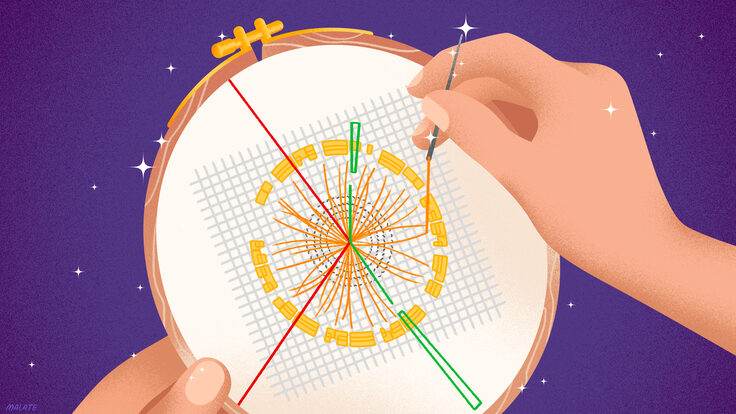This story originally appeared in DESY inFORM, the in-house publication of the DESY laboratory in Hamburg, Germany.

The drilling station in the foreground melts holes into the ice that are 2.5 kilometers long and house the IceCube strings. Photo courtesy of DESY.
Nineteen and fifty-nine: taken together these numbers give the year DESY was founded. They will be with us through all this anniversary year. But they also play a special role in the just-finished season of the Antarctic neutrino telescope IceCube: 19 IceCube strings have been deployed this Antarctic summer--as many as ever before--propelling the total number of strings to 59. When IceCube will be completed in January 2011, it will consist of 86 strings. These are six more than originally planned because we will integrate a small sub-detector called “Deep Core” into IceCube.
The sub-detector is tailored to detect neutrinos below the nominal IceCube threshold of roughly 50 giga-electronvolts. Each string carries 60 Digital Optical Modules (DOM)--highly sensitive light sensors in pressure-resistant glass spheres. The spheres are lowered into holes melted into the polar ice crust with pressurized hot water, down to depths between 1450 and 2450 metres, where they freeze in.
At the end of the construction phase, a full cubic kilometer of ice will be equipped with DOMs. In the extremely transparent ice, they “see” the light emitted by charged particles produced by high-energy cosmic neutrinos. Neutrinos may transmit information from cosmic regions from which no light but only the extremely elusive neutrinos can escape.

Schematic of the IceCube detector with AMANDA and Deep Core. IceCube has a volume of one cubic kilometer. Deep Core
A substantial amount of IceCube components and know-how comes from DESY: almost a quarter of altogether five thousand IceCube DOMs were assembled in Zeuthen and tested in a deep-freeze chamber over several weeks. Meanwhile, the final 233 of the DOMs produced in Zeuthen were shipped to Antarctica and are now waiting for their installation in the coming two Antarctic summer seasons. Moreover, DESY delivered the magnetic shielding and suspension elements for all DOMs. DESY also designed and tested the front-end electronics at the surface, which manages the entire communication with the DOMs. By now, DESY has delivered all components for the IceCube assembly--in total compliance with the planned time and budget limit.
Have we already “seen something”? Yes--nearly ten thousand neutrinos! However, their number, energy, and angular distribution are compatible with the assumption that their origin is not extraterrestrial but that they are almost completely originating from collisions of charged cosmic particles with the Earth’s atmosphere. We wouldn’t be particle physicists if we didn’t use this largest statistic worldwide of “atmospheric neutrinos” to investigate interesting questions of particle physics; nevertheless, we haven’t yet reached our main goal: the clear evidence for extra-terrestrial neutrinos. This could change very soon.
The sensitivity we have reached after one year with a quarter of the IceCube detector complete (22 strings, data of 2007) is already twice as high as that from seven years of data taking with the predecessor detector AMANDA. This is a real step into new territories, and the coming years will yield another factor of 20 to 30. The identification of high-energy extraterrestrial neutrinos could solve one of the most exciting questions of astrophysics: what are the sources of “cosmic rays”? What is the origin of protons, light and heavy atomic nuclei which constantly bombard the Earth’s atmosphere, some of them reaching energies more than a million times higher than the LHC beam energy?
Cosmic rays were first recorded in 1912 by the Austrian physicist Viktor Hess, so only three years are left to the hundredth anniversary of this discovery. Wouldn’t it be fantastic if we were able to solve the secret before that date?
By Christian Spiering






